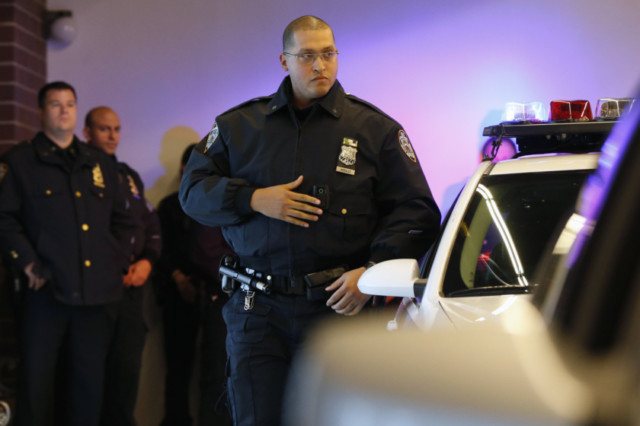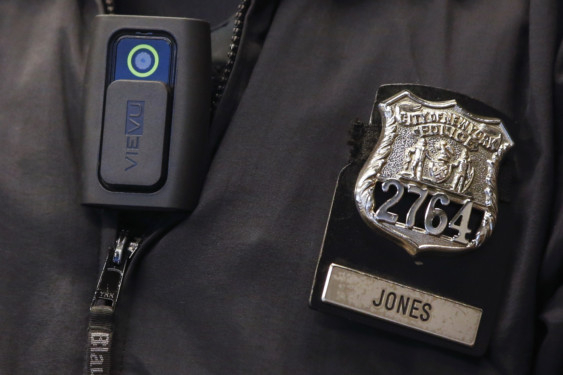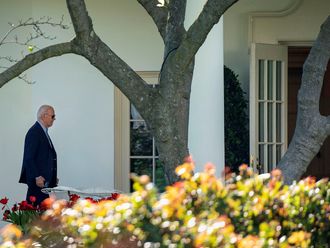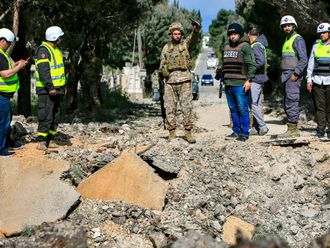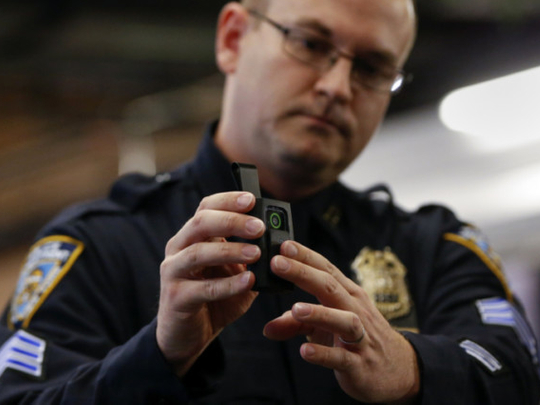
Los Angeles: After nearly two years of fundraising, testing and crafting policy, the first Los Angeles police officers hit city streets Monday morning wearing chest-mounted body cameras.
The rollout marked a significant moment for the department, pushing Los Angeles forward in becoming the largest US city to use the devices on a widespread scale.
The cameras distributed Monday were the first of more than 7,000 that will be purchased and deployed across the LAPD in the next several months.
Dozens of reporters huddled outside a San Fernando Valley police station in the predawn hours Monday, waiting for officials to speak about the new technology. Inside, about two dozen officers watched one last demonstration about the devices before trying them on.
“This is a big moment for us,” said Captain Todd Chamberlain, who oversees the LAPD’s Mission Division. “I think they realise that they’re making history today.”
A police officer fitted with a body camera. Its officers has drawn significant attention in recent months amid a heated national debate about policing
The Mission Division, which covers San Fernando Valley neighbourhoods including Sylmar and Panorama City, was the first to get the cameras. Any uniformed officer assigned to the division will wear the devices, Chamberlain said.
South Los Angeles’ Newton Division is scheduled to get its body cameras in about two weeks; specialised units including the SWAT team will get theirs by the end of the month.
The use of body cameras by officers has drawn significant attention in recent months amid a heated national debate about policing. Advocates say that the cameras will help bring clarity to controversial officer-civilian encounters, guard against officer misconduct and help clear those falsely accused of wrongdoing.
But concerns linger over the LAPD’s planned use of the technology, particularly about who will get to see the videos from the cameras and when.
The LAPD policy — approved by the Police Commission on a 3-1 vote in April — allows officers to review images from the cameras before writing reports or giving statements to internal investigators. The department has also said it does not plan to publicly release the recordings unless they are part of a criminal or civil court proceeding.
Critics, including the Southern California chapter of the American Civil Liberties Union, said giving officers but not the public a chance to look at the images undermines the accountability that the cameras are intended to reinforce.
Police Commission President Steve Soboroff, who led the efforts to purchase the cameras upon joining the board two years ago, said he believes the technology could be “transformative” — not just for the LAPD, but agencies across the country.
“Now let’s see the results,” he said.


